RV Surge Protectors: Are You Covered?
- Most RVers are not protecting their RV from electrical issues.
- There are 4 electrical issues an RVer can encounter while traveling: surges, miswired pedestals, high/low voltage, and wiring issues inside the RV.
- Some RVs come with one of the 5 different built-in Surge Guard systems that provide varying levels of electrical protection.
- To provide for complete protection of the 4 common electrical issues, you need a portable Surge Guard Total Electrical Protection unit.
It is unbelievable to think that 90% of RVs do not have any type of electrical protection system in place. A total electrical protection system was the first item we bought when we started RVing 5 years ago, and we’ve used one every day since. We’ve had many situations where pedestals were mis-wired, and we’ve had low voltage situations more times that we can count. Luckily, our Surge Guard has protected us from all of this.
So, what exactly are you protecting your RV from when you use an electrical protection device? It’s a lot more than power surges which is what we associate surge protectors with. Surges are the least common problem with RV electricity, believe it or not. An RV typically has a lot of sensitive electronic circuitry in it, and having steady power is crucial to keeping these components from having an early funeral. Failure of components like AC units, refrigerators, washer/dryer, and even computers plugged into a wall outlet can be very expensive to replace. While the expense is a big deal, there are other considerations like the inconvenience of getting your RV to a repair shop to consider. Even worse, what if you are on the road and something fails, and now you are left trying to find a reputable repair shop. Needless to say, preventing these type issues is the key, and one of the biggest things you can do to better your odds of preventing these type failures is to make sure that the power coming into your RV is monitored in some way. This is actually very easy to do, and you do not need to be an electrician to do it. Let’s look at the 4 areas that need to be addressed as it relates to RV electricity:
Electrical Issue #1: Surges
The first issue that most RVers will think of as it relates to power coming into the RV is surge protection. A surge is a quick electrical spike that can quickly destroy anything in its path, so yes, we need to make sure that surges are accounted for when we look at protecting our RV. Since most of us are familiar with living in a house, we tend to only think of surge protection, and we make the assumption that this is the only devil in the room. The problem with this line of thinking is that houses generally have a good, stable, consistent power supply coming in, and the local power company has designed the electrical grid to provide plenty of power for the entire neighborhood.
Electrical Issue #2: Miswired Pedestals
Now let’s think about RV parks across America. The original design should have been professionally inspected, but then the years start to pile on, and over time the electrical pedestals that we plug into can begin to have problems. Think of a thousand RVs plugging into the pedestal before you, and then think of some of the things you have seen while traveling like RVs running into pedestals, RVers dropping their power cord in the dirt and then plugging it right in, jerking and pulling on the electrical cord to get it unplugged from the pedestal, and so on. You get my point; the pedestals can start to wear down, and some RV parks are better than others at keeping up with preventive maintenance. What can these problems cause for you? Well, wiring can come loose in the pedestal, and you could lose the ground wire which can be dangerous. The neutral wire could become disconnected and put your RV in danger of up to 240 volts running to one side of your RV. We hear plenty of stories of electricians repairing pedestals and wiring them wrong because it is not exactly the same as wiring a regular house panel. All of these type issues are real issues that are more common than you may think and should be addressed with a proper electrical protection system.
Electrical Issue #3: High/Low Voltage
So, we have two issues we have discussed: surge protection and ensuring the power pedestal is wired properly, but we are still not done. While we discussed surges that are defined as quick extreme voltage spikes, there is something that is much more common than a spike, and that is high and low voltage. You will rarely experience a true surge, but you will without a doubt experience low voltage and maybe even high voltage. Low voltage is typically defined as anything below 102V, and high voltage is anything above 132V. So, what causes a low or high voltage situation? Imagine you are at a crowded park in the middle of the summer and everyone is turning their AC units on. When this occurs, it is very possible to see low voltage conditions. The problem is that this may happen to you, and you don’t even know it. Many times, a low voltage situation will not immediately zap an appliance, but it is guaranteed that the life expectancy of an appliance is reduced when given low voltage. So, you wake up one day and you have an AC unit that has failed, and because there is not an obvious cause and effect with low voltage, you just assume that the unit failed because of natural causes. Low voltage and high voltage are the silent killers and dealing with this should be a part of your plan to protect your RV. For all the electricians out there that only use a meter to check the pedestal before plugging in, while this is a good practice, it will do nothing to protect you against real time events.
Electrical Issue #4: Wiring Inside the RV
There is one more thing to consider, and that is the wiring inside of your RV. Up until this point we have just discussed dealing with the incoming power, but what if the incoming power is fine, but you have a wiring issue inside of your RV? Well, if you have ground wire issues or neutral wire issues, then the effects on your electronics could be fatal. Imagine losing the neutral in a 50-amp RV; this can create up to 240 volts going straight to an appliance. There is no device that can handle that level of voltage for any sustained period of time without being destroyed.
- Protect your RV from surges.
- Ensure that the pedestal is wired properly.
- Protect your RV from high and low voltage.
- Ensure that your RV does not have any issues with ground and neutral wiring.
There is some good news and bad news coming up. The good news is that you may be protected against some of these issues with devices that are installed in your RV from the factory. The bad news is, it is a guarantee that you are not covered from all of these issues with a built-in unit from the factory. Many class A motorhomes have some type of built in surge protector that is combined with the transfer switch. Smaller class A, B and C motorhomes may or may not have any electrical protection built in, and towables like 5th wheels and bumper pulls likely have nothing built in, with the exception of very high-end units like the Mobile Suites. There are solutions for all of the different types of RVs but let’s look at the most common electrical protection systems that are placed in class A motorhomes to see if this is ample protection.
The most common preinstalled or "OEM" (Original Equipment Manufacturer) system you will find in a motorhome is a Surge Guard unit. Surge Guard, in my opinion, has the best products when it comes to electrical protection; however, there are different levels of protection that are provided in these built in units. It may surprise you to know that you may not be as protected as you may think. I hear all the time from RVers that they have a built-in unit and that they are protected, but when we take a look at the model number of the built in electrical protection system, we find that they have nothing more than a surge protector, and all of the other elements we discussed are not accounted for.
Here is a list of the current Surge Guard Automatic Transfer Switches so that you can check to see what kind of protection you have in your motorhome. Keep in mind that model numbers change over the years, so you may have to look your model up if you don’t see it on the chart below:

As you can see from the chart, if you have a built-in Surge Guard with model number 41300 (30amp) or 40100 (50amp), then you have no electrical protection. These models just serve as a transfer switch for RVs with generators. There are multiple types of 50-amp models that offer different levels of protection, and this is usually where the confusion starts. Most motorhomes have the lesser of the basic unit which is the 41260. This unit does have surge protection and can detect some wiring issues but does nothing to protect you from more common issues like high/low voltage and load side issues. The higher-level models are pretty good. With these units, you do get the full protection from mis-wired pedestals, surges, and high/low voltage. What these units do not protect against, nor does any built-in unit on the market, is the load side protection for any wiring issues inside the RV. Before you go with what the RV salesman tells you, which is usually to tell you that you are completely protected, do some research of your own. Go look at the model number of the built-in unit that you have and decide for yourself. From my research, it appears that most of the higher end diesel pushers from Entegra, Winnebago, Thor, and Newmar have one of the higher end Surge Guard units built in. Don’t assume though; go check the model number you have and be sure of what your protection level is. By the way, Tiffin owners like us will most likely find that the 41260 is what is built in and not the higher level models.
Remember, if you are in a towable, then you likely have no built-in protection and will need to pursue resolving power protection yourself. If you have a newer Mobile Suites, then you likely have the 40350, but double check to make sure.
And keep in mind that you can use one of the Surge Guard Portable Total Electrical Protection units even if you have a hardwired unit installed. They will work together to protect your RV.
How Can you get Total Protection?
This is really the easy part because Surge Guard provides portable electrical protection systems that check every box as far as electrical protection for your RV. These portable units simply plug into the pedestal, and then you plug your RV power cord into the Surge Guard device. Once you have everything plugged in, then it will protect you from all 4 areas of concern. The portable unit will let you know if there is a mis-wired pedestal, protect you from surges, protect you from high and low voltage, and Surge Guard has the only unit on the market that also gives you load side protection that will detect elevated ground currents and open neutral conditions inside of your RV.
Don’t get confused though, there are many portable models on the market, and all are not created equal. There are portable models that only provide surge protection and do not protect for high and low voltage and other important levels of protection.
Let’s focus on the Surge Guard units and look at this chart of their portable units:

As you can see from the above chart, the 34931 (30-amp model), and the 34951 (50-amp model) are the latest models that protect you from the 4 main areas of concern (surge spikes, high/low voltage, mis-wired pedestals, and load side issues). If you are looking for the most protection possible, then either the Surge Guard 34931 or 34951 is the unit to get.
Surge Guard does offer hardwired models (35530 and 35550), and these are great, but they do not protect you from load side issues.
The 44280 and 44290 are the upgrade to the 44260 and 44270 as seen on this chart. The 44280 (30-amp model), and 44290 (50-amp model) provide good surge protection, but will not protect your RV from high/low voltage or load side issues.
Why would someone buy the units that do not provide complete protection?
Many RVers buy these “surge only” units with lower levels of protection because they are cheaper, and they believe it is all they need. These lower levels of protection have their place, but it is not to give your RV total protection. If you are in a small towable, pop-up, or even a teardrop camper, then the Surge Guard units that only protect you from surges (44280 and 44290) can be a good choice. Many of these type RVs do not have the expensive electronics and may not even have an AC unit. Many RVers with these type units will opt for the surge protector unit because they are less expensive and they are ok with the level of protection only being for surge spikes. More often than not though, we see RVers with this type of RV opting for the higher level of coverage in the 34931 to ensure they have maximum protection.
The other type of RVer that will buy the units with surge protection only are those RVs that come with a built in Surge Guard unit as discussed above. While the built in units from the manufacturer are great, the circuit boards in them are not replaceable. This means that if the built in unit takes a voltage spike, and this spike destroys the circuit board, then you have to replace the whole unit. These units can range from $600-700, so while it protects you from a surge, you may have to replace it. It is cheap insurance on these units to buy a portable surge protector to protect the much more expensive total protection system. In addition, none of the built in units from the manufacturer have load side protection, so we are seeing a big trend on these RVers buying the 34951 portable unit to ensure they have all the protection they can get.
Conclusion
You don’t need electrical protection until you need it. Saving a few hundred bucks and risking damage due to your lack of electrical protection just does not make sense. Unfortunately, I have heard from hundreds of RVers that have been unprotected, and then plugged into that one pedestal that was not wired correctly and sent 240 volts to their appliances, or maybe there were low voltage issues, or no grounding in place. I assure you these RVers now have an electrical protection unit! Decide for yourself, but as a full-time RVer with no prior electrical experience, I can tell you that having my Surge Guard 34951 plugged into the pedestal makes me feel a whole lot better about being protected from poor park power.
Products Links at TechnoRV
2 comments
Surge Guard
View allThe 34931 is compatible with the new Surge Guard app so you will be able to see your information from your smartphone, so there is no need to buy the wireless monitor unless you want a dedicated screen. Also, a lot of customers simply buy a TechnoRV 30A extension cord and keep it in their bay with the Surge Guard and then run the cord to the pedestal. Just an idea if you want to keep the Surge Guard protected.
GM, I’m considering purchasing the Surge Guard 30 amp portable surge protector (model 34931) for my 2016 22’ travel trailer. I plan to install the 34931 inside the unit as I do not want the 34931 out on display at the pedestal where it could be stolen. I will have the proper male and female connectors installed where the 34931can be plugged in and removed easily should I upgrade to a new TT. I’m not sure if I’ll also get the wireless display (model 40301), right now anyway. Your thoughts? Thank you, Stanley



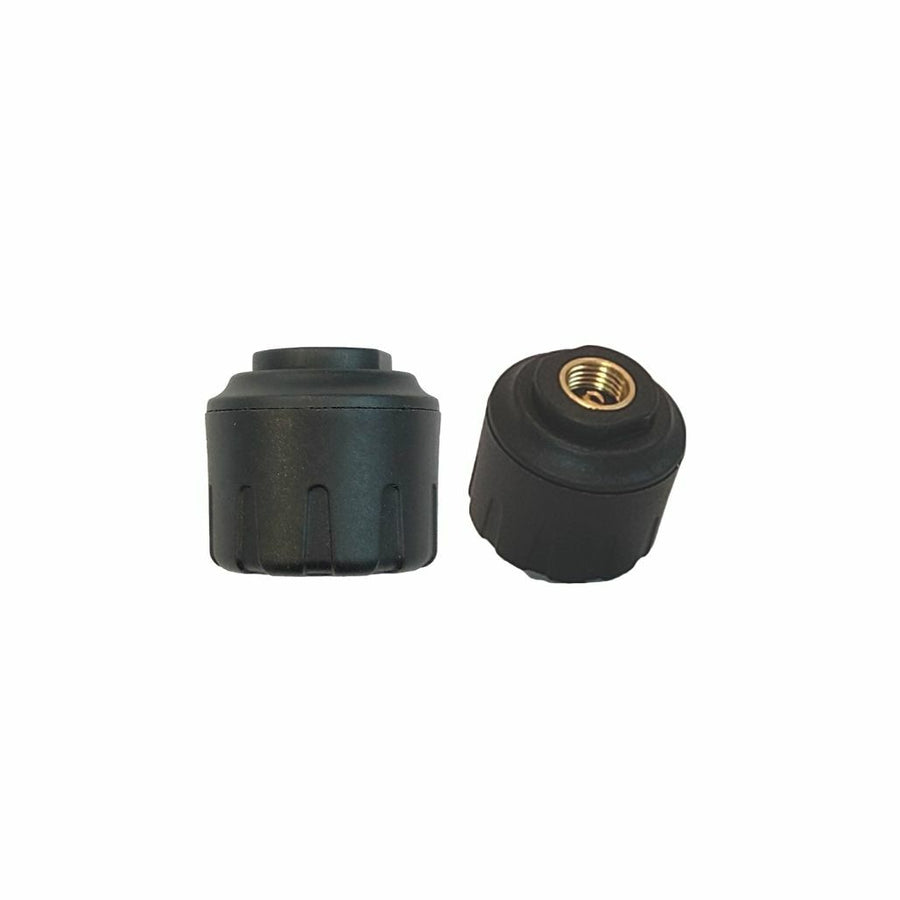
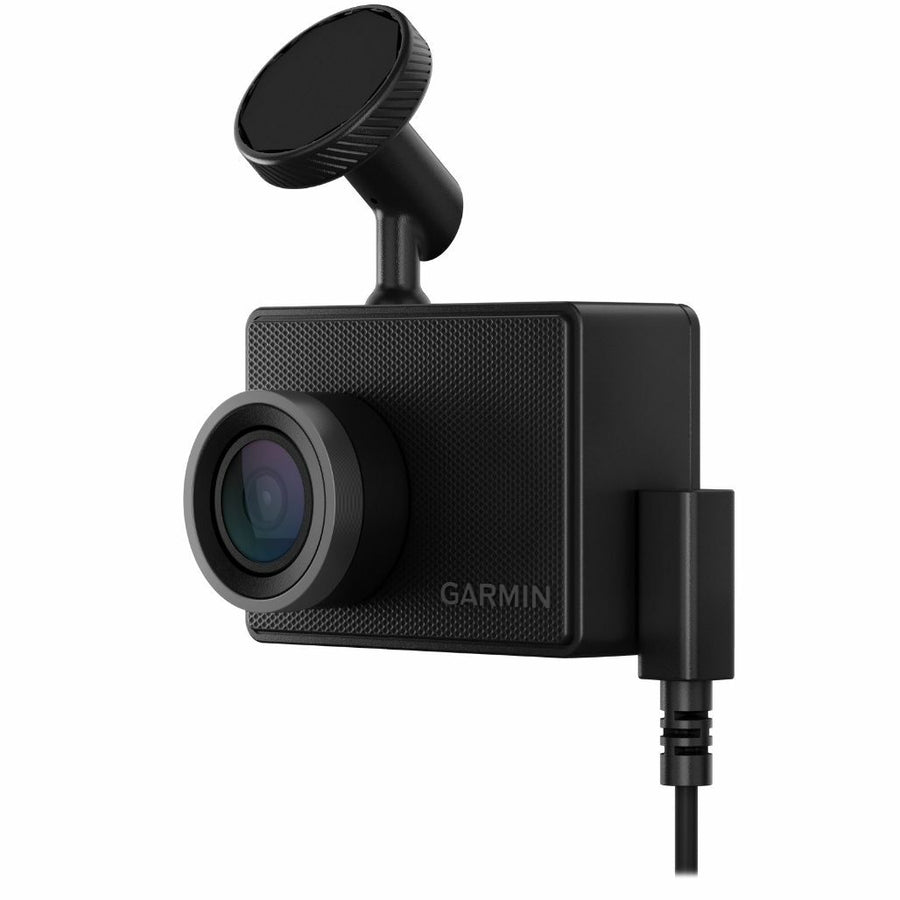
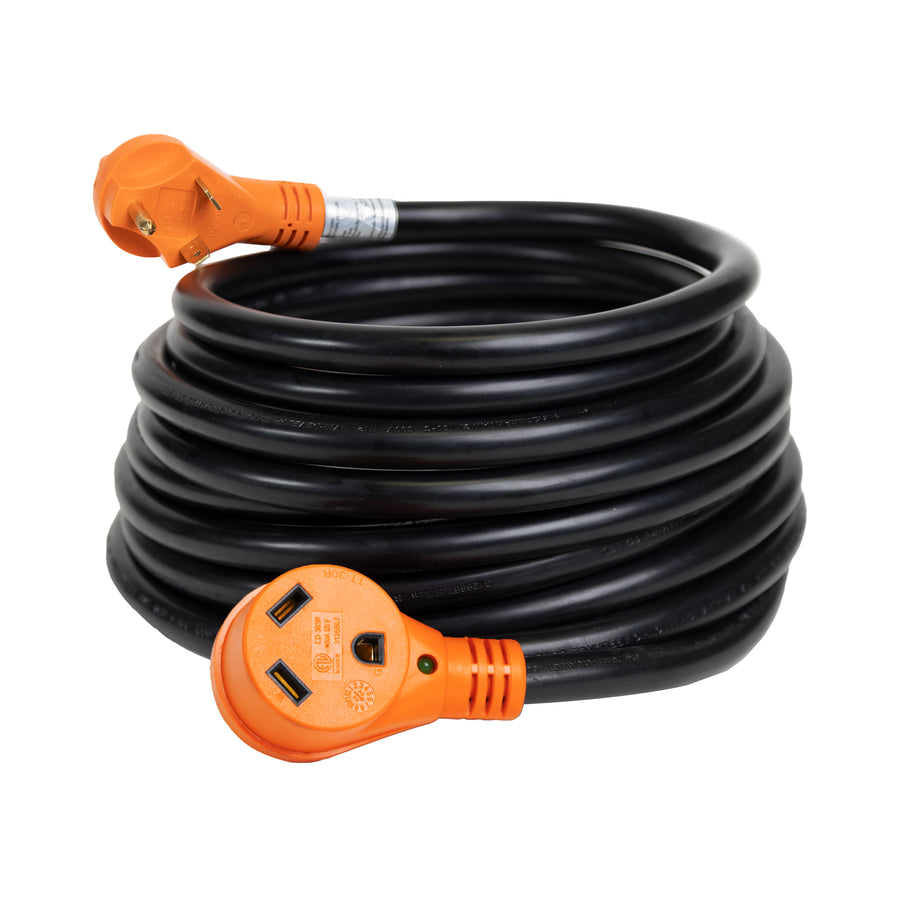
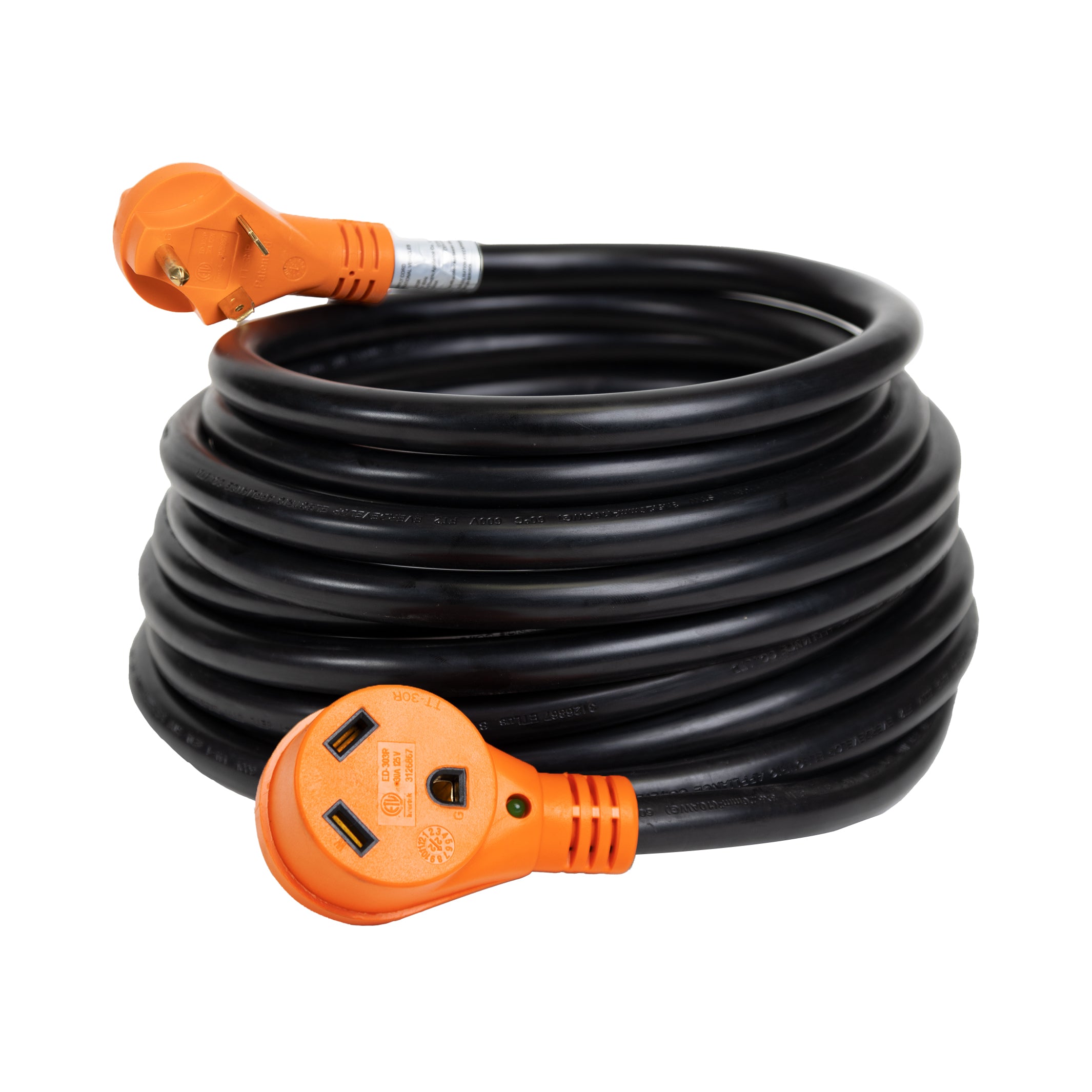
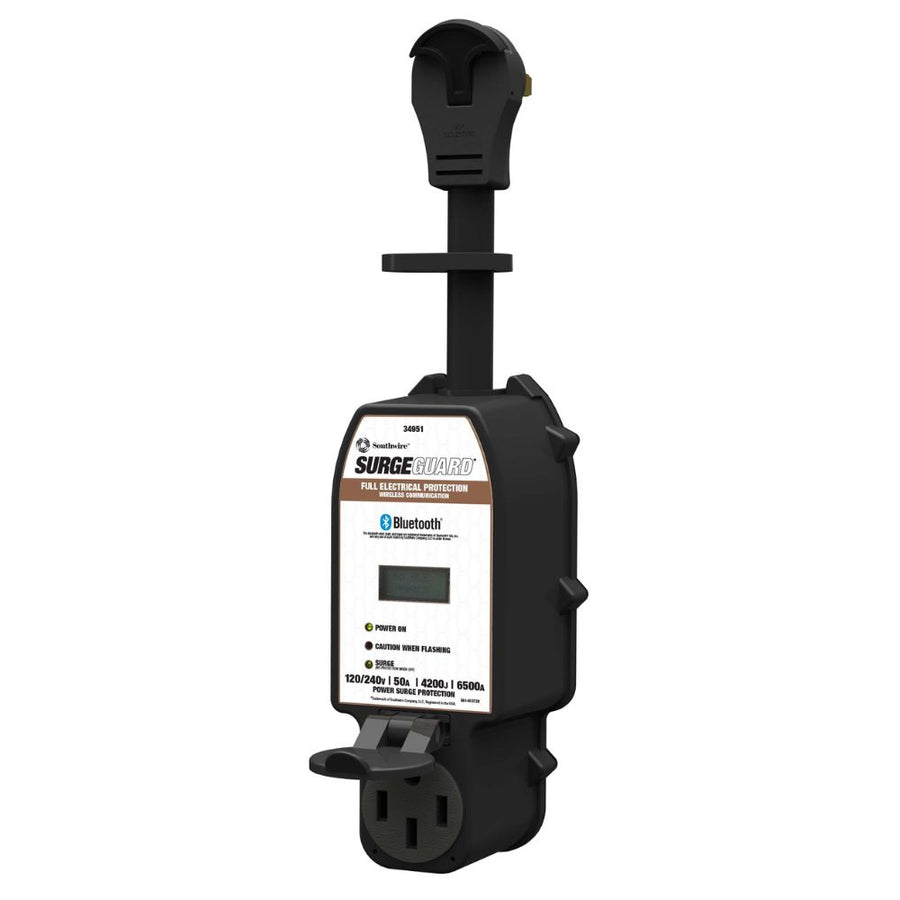
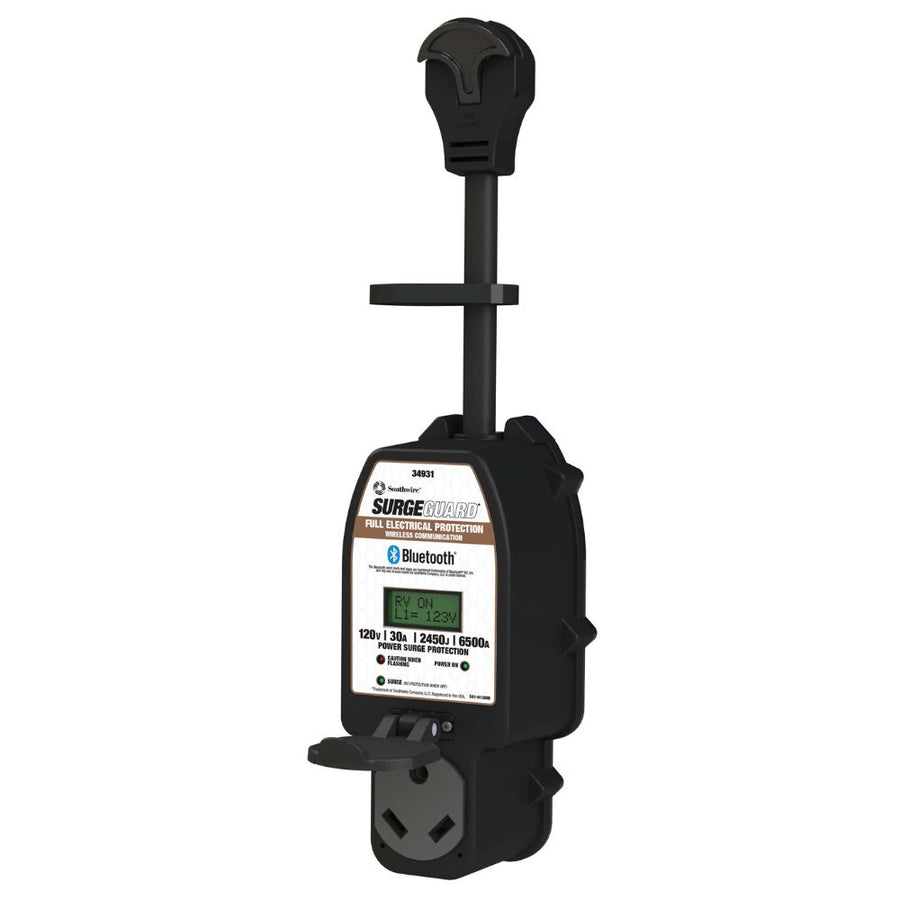
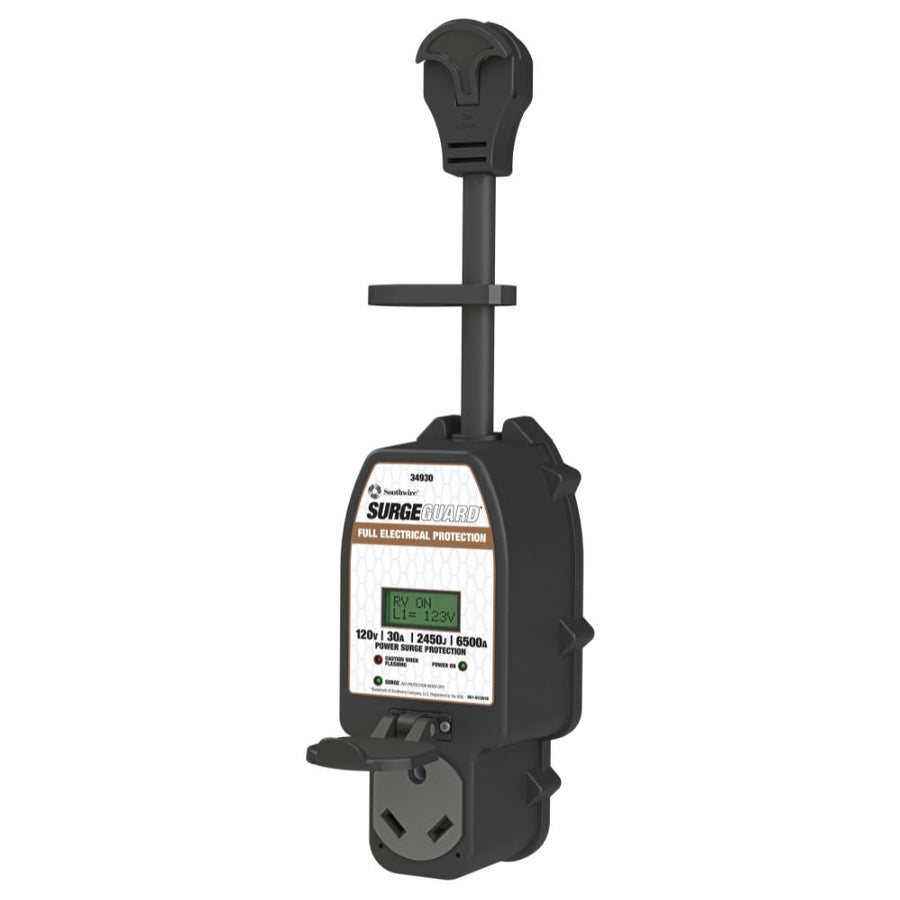
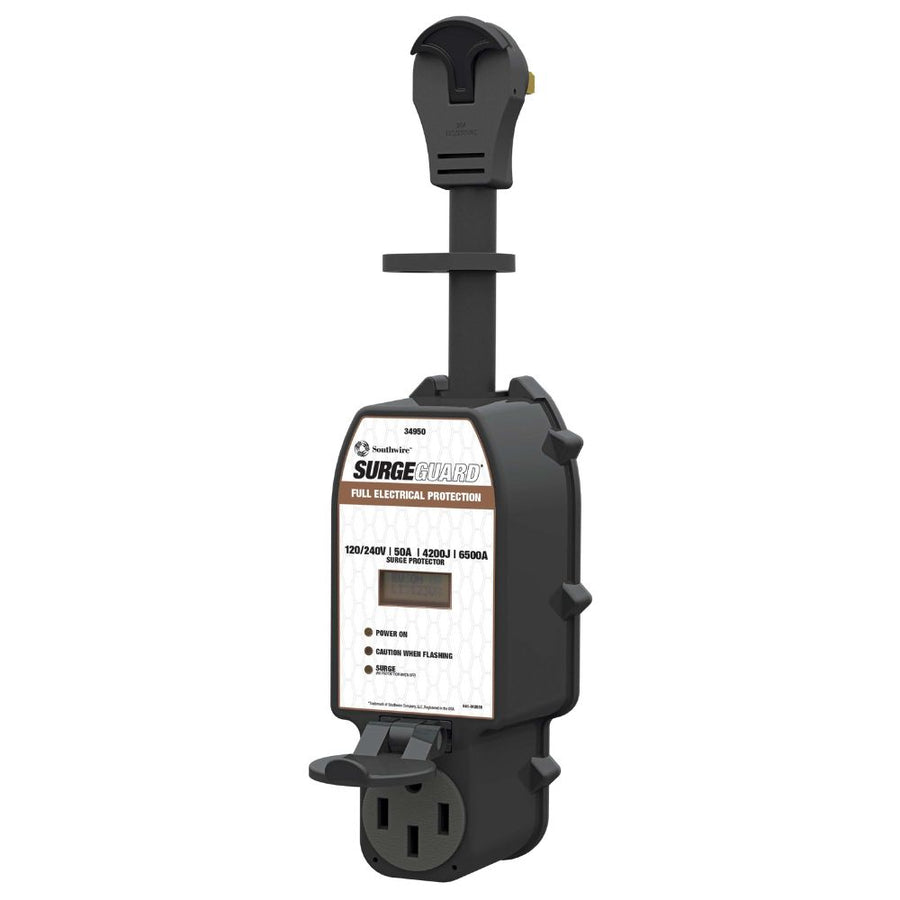

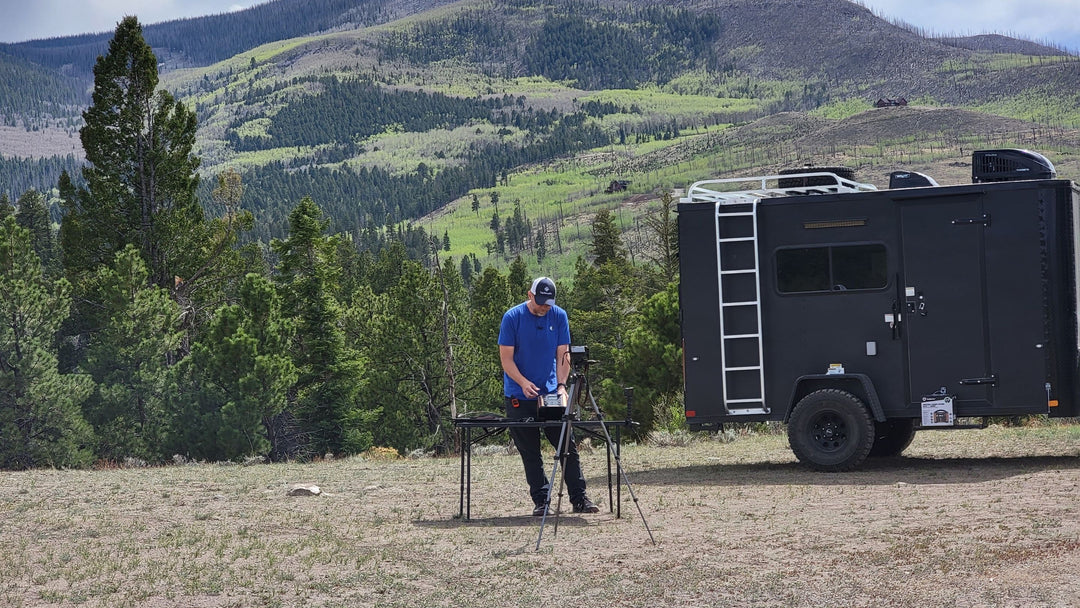

The 34931 is compatible with the new Surge Guard app so you will be able to see your information from your smartphone, so there is no need to buy the wireless monitor unless you want a dedicated screen. Also, a lot of customers simply buy a TechnoRV 30A extension cord and keep it in their bay with the Surge Guard and then run the cord to the pedestal. Just an idea if you want to keep the Surge Guard protected.
GM, I’m considering purchasing the Surge Guard 30 amp portable surge protector (model 34931) for my 2016 22’ travel trailer. I plan to install the 34931 inside the unit as I do not want the 34931 out on display at the pedestal where it could be stolen. I will have the proper male and female connectors installed where the 34931can be plugged in and removed easily should I upgrade to a new TT. I’m not sure if I’ll also get the wireless display (model 40301), right now anyway. Your thoughts? Thank you, Stanley
Leave a comment